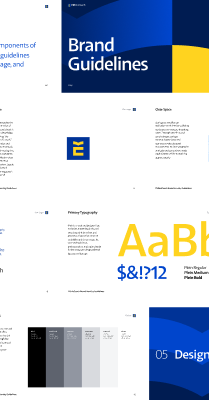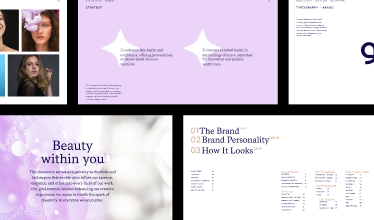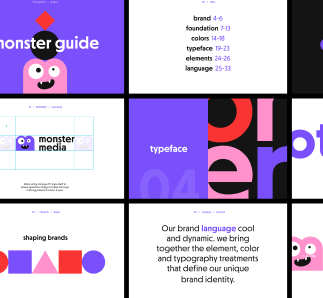Brand guidelines key steps
Creating brand guidelines involves a structured process to ensure that every aspect of the brand is thoroughly defined and easily understood by anyone who interacts with it.
-
Brand discovery. To build a strong brand, begin with thorough research and analysis to understand the brand's history, target audience, competitors, mission, purpose, core values and market position.
-
Define visual identity. To create a cohesive visual identity, finalize the primary and secondary logos, Typography, colors and imagery that aligns with the brand’s personality and character.
-
Brand voice and tone. Define the brand's voice by determining whether it is formal, friendly, professional, or quirky, It totally depending on the context, such as social media versus corporate communications.
-
Usage guidelines Establish clear guidelines for logo usage, including rules for clear space, minimum size, fonts pairing and incorrect usage examples with specific instructions.
-
Brand applications Develop guidelines for applying the brand to various mediums, including all marketing and communication design for digital and print both with specific instructions.
Brand guidelines vs. Brand book
Brand guidelines offer specific, practical instructions for applying the brand's visual and verbal elements consistently across various media, ensuring uniformity in brand representation for designers, marketers, and partners.
The brand book, on the other hand, provides a comprehensive overview of the brand, including its history, values, mission, and strategic positioning, along with visual and verbal guidelines. Its goal is to convey the brand's essence and philosophy to internal teams, new employees, and external partners while also detailing application rules.
Impact of brand guidelines on business
Well-defined brand guidelines impact a business by ensuring consistency across all touchpoints, streamlining creative processes, and reinforcing brand identity. This consistency builds customer trust and loyalty, enhances employee engagement, and supports scalable growth. Additionally, it helps manage risks, strengthens competitive positioning, and improves customer perception and experience by maintaining a cohesive and professional brand presence.

FAQ
Brand guidelines are a comprehensive set of rules and standards designed to ensure consistent presentation of a brand across all touchpoints. They cover elements like logo usage, color palettes, typography, imagery, and brand voice, providing detailed instructions on how these elements should be applied. The purpose of brand guidelines is to maintain a unified and professional brand identity, ensuring that all communications and materials align with the brand’s values and strategic goals, and fostering a recognizable and cohesive brand presence.
Yes, small businesses and startups benefit greatly from brand guidelines. Even with limited resources, having brand guidelines helps establish a consistent and professional brand identity from the outset. This consistency builds credibility, aids in creating a cohesive customer experience, and ensures that all marketing materials align with the brand's core values and goals. Brand guidelines also streamline design and communication processes, making it easier to manage and grow the brand as the business expands.
Common key points of brand guidelines include logo usage, which defines how the logo should be displayed and used correctly; color palette, specifying primary and secondary colors and their applications; typography, detailing the fonts and their usage for consistency; imagery, outlining the style and types of images that align with the brand; and brand voice, which guides the tone and style of written communication. These elements work together to ensure a cohesive and professional brand presentation across all platforms and materials.



